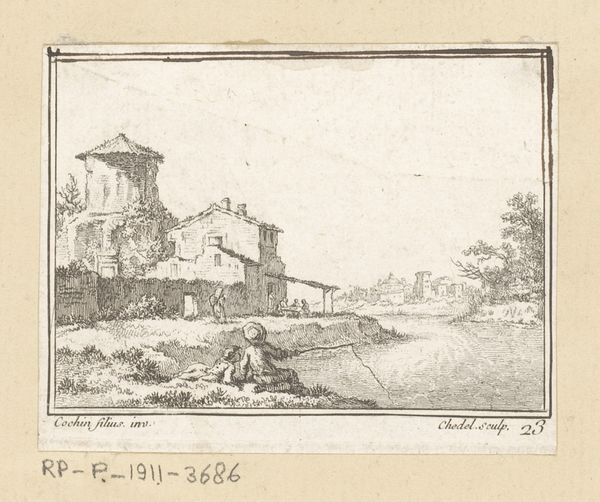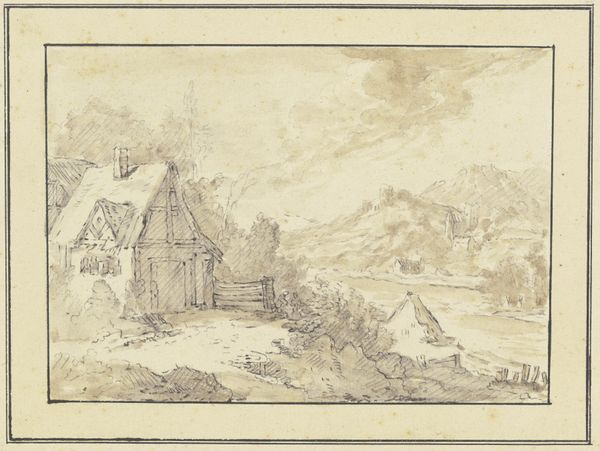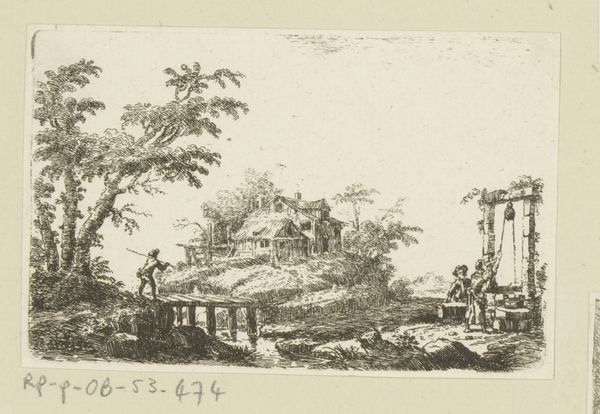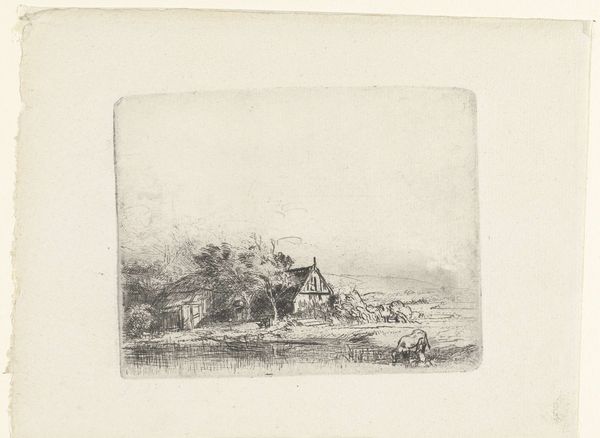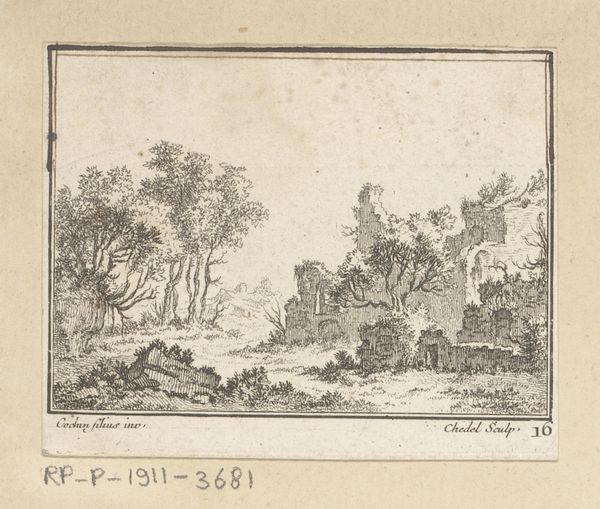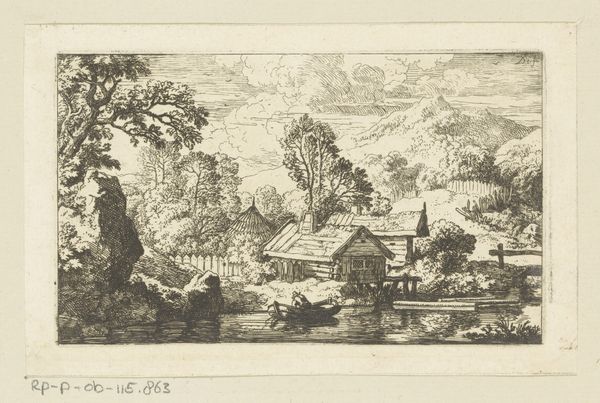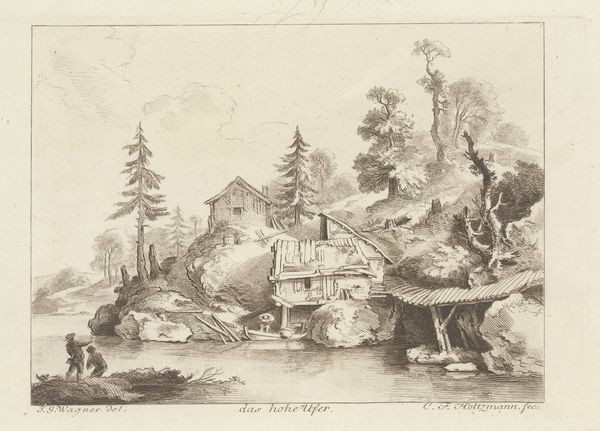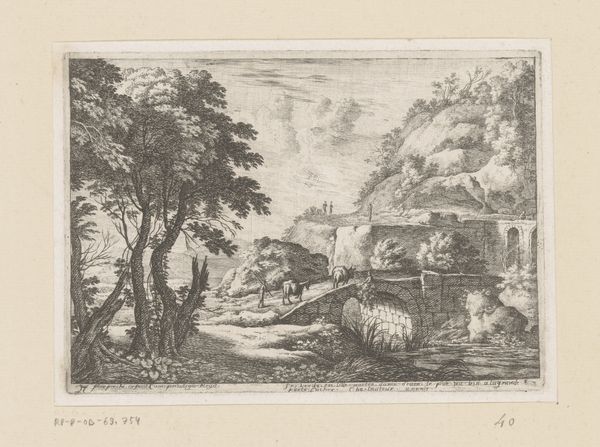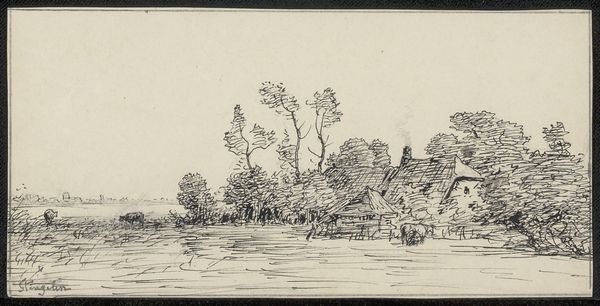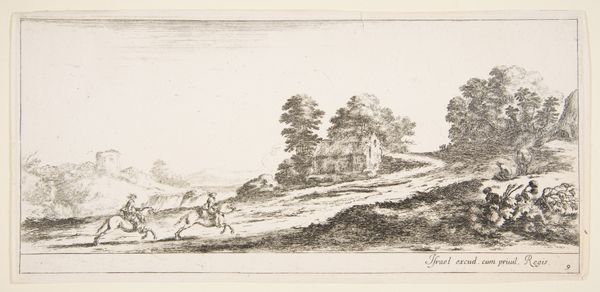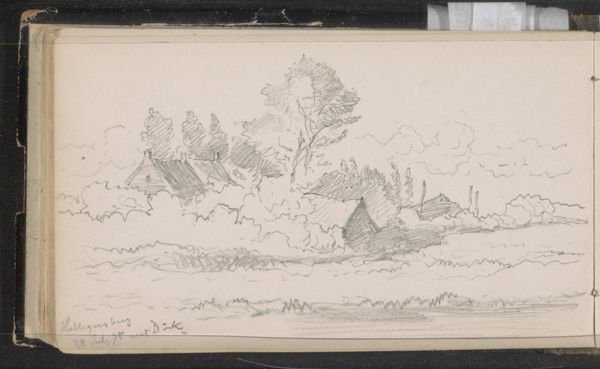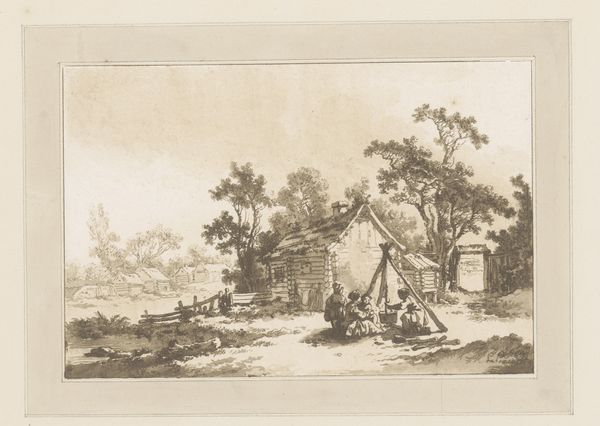
Landschap met een huis aan een rivier en een visser met fuik 1725 - 1763
0:00
0:00
quentinpierrechedel
Rijksmuseum
drawing, print, etching, ink
#
drawing
#
narrative-art
#
baroque
# print
#
etching
#
landscape
#
river
#
ink
Dimensions: height 65 mm, width 85 mm
Copyright: Rijks Museum: Open Domain
Editor: This is Quentin Pierre Chedel’s "Landschap met een huis aan een rivier en een visser met fuik," or "Landscape with a House on a River and a Fisherman with Fyke," created between 1725 and 1763. It's an etching, so ink on paper. The scene feels so calm, almost like a memory. What draws your eye to this print? Curator: It’s fascinating how Chedel situates this seemingly idyllic scene within a larger framework of social and economic realities. Landscape art wasn’t just about pretty scenery, it reflected ownership, labor, and the relationship between humanity and nature. The fisherman, for instance, isn't simply enjoying a leisurely activity. His labor, and the implication of taking from the river, highlights human impact. Editor: That's interesting, I hadn't considered the fishing as work! It seemed like a quiet pastoral scene. Curator: Exactly, and it's that tension that makes this piece compelling. Who owns the land? Who has access to the river's resources? Think about the context: the 18th century in Europe was marked by vast social inequalities, and this image subtly acknowledges them. Do you see a sense of abundance or scarcity in the landscape? Editor: Hmmm… scarcity, I think. The house looks quite humble, not a grand estate. The fisherman looks alone. Curator: And that isolation can tell us a lot. It suggests a lack of community, perhaps reflecting the artist’s commentary on social mobility or displacement. Etchings like this circulated widely, engaging viewers in these conversations about their society. What feelings does that awareness evoke? Editor: A sense of responsibility, perhaps. It makes you consider what we take for granted, or overlook when viewing landscapes. Curator: Precisely. Art can be a tool for seeing the world differently, for uncovering hidden narratives and power structures. Hopefully it makes us question our assumptions. Editor: This was a fresh outlook, thank you for revealing such historical context and intersectional points to consider while observing seemingly bucolic landscapes!
Comments
No comments
Be the first to comment and join the conversation on the ultimate creative platform.
